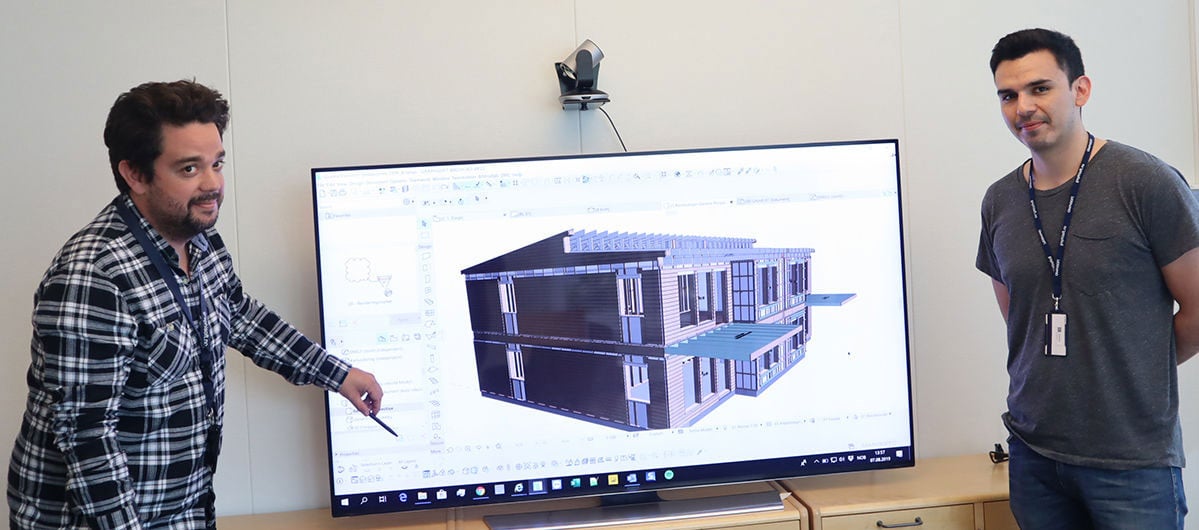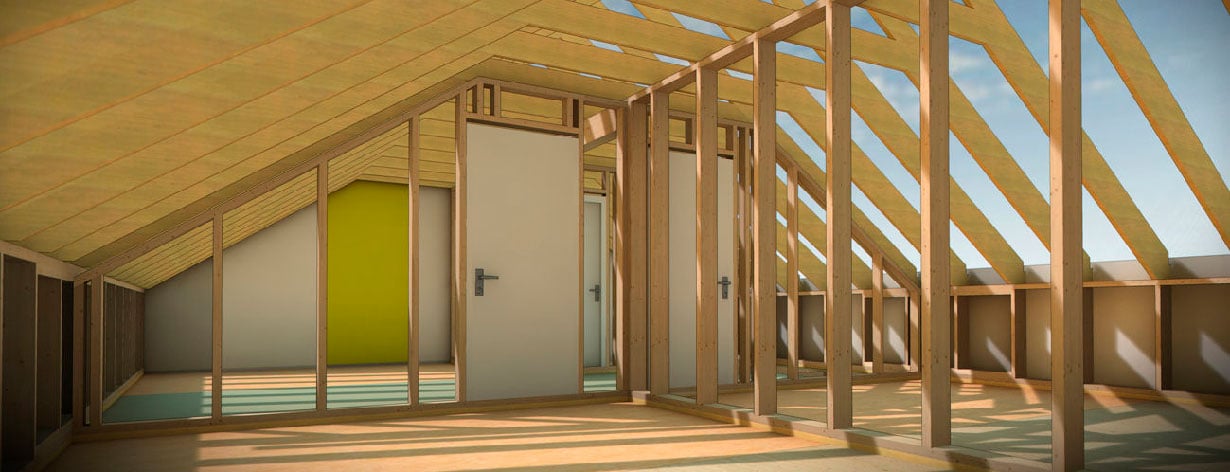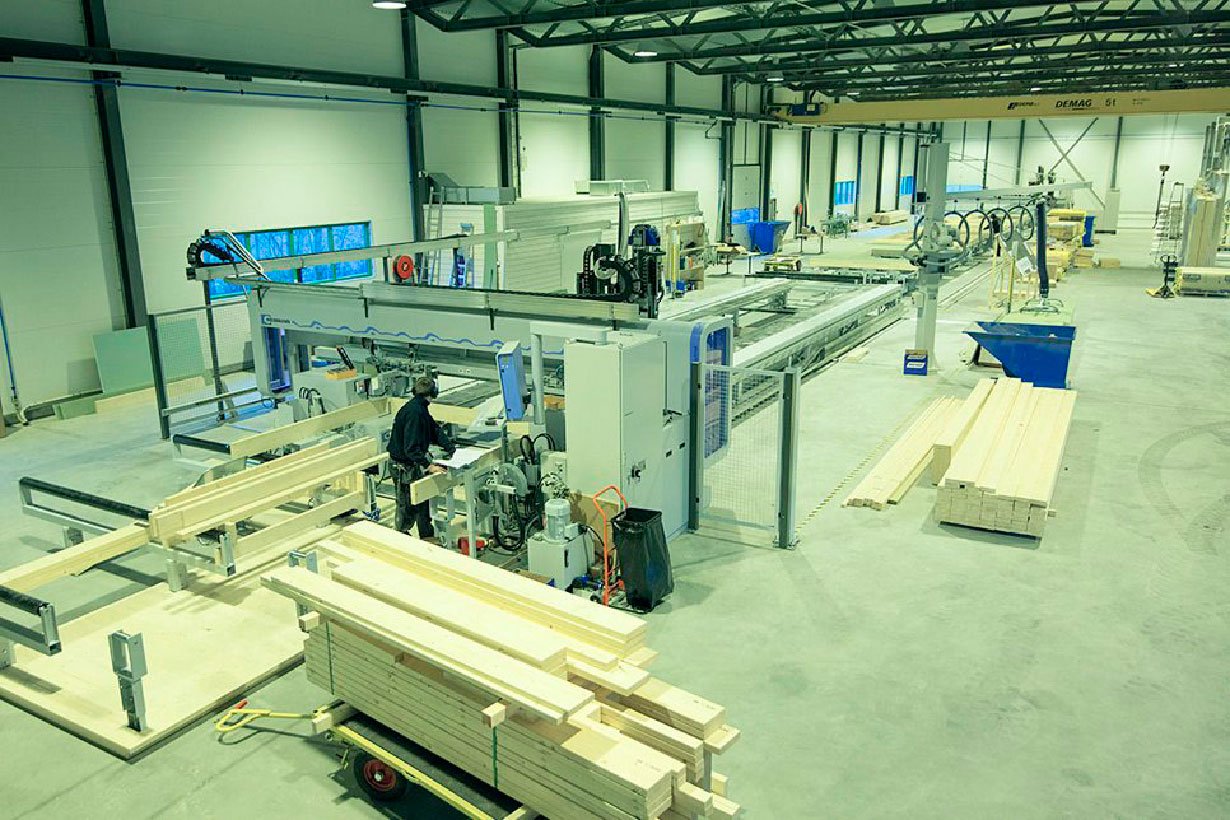Prefabricated houses from 1-2-Tre
Fully automated production of prefabricated elements provides high quality at a lower cost and is better for the environment. With data from ArchiFrame, walls and floors are manufactured for ready-made houses using automated processes – right down to the smallest detail.
"It works almost like a large 3D printer", explains BIM technician Jonas Fjeldstad from Graphisoft Norge (now Nordic BIM Group). Fjeldstad is the company's expert on ArchiFrame. He has been involved in the project from the start, from drawing to model - from two dimensions to three and more.

Like 3D printers, the production line moves along three axes. Equipped with drill bit, saw blade, nail gun and circular saw, the machines can produce and customize the wood elements defined in Archiframe.
"The automation is digital, and engineering/planning is done in ArchiFrame. The floor drawings are detailed 3D drawings that take into account windows and wall studs, choice of construction, dimensions and materials – right down to the position of screws and nails that are specified using coordinates."
Benefits of element production
There are many advantages to manufacturing finished modules in the factory, according to Fjeldstad.
"The contractor spends less time on the construction site and the wood is not exposed to moisture. It is more environmentally friendly because it optimizes the use of the materials. By consolidating production in one place, both logistics and transport are simplified."
The production method has been shown to reduce the margin of error in production. Communication with the customer improves, errors are detected early and corrected along the way.
In addition, it is safer for safety and HSE to carry out work in the production hall and let the machines handle the saw. Fjeldstad highlights user-friendliness, which is one of the most important advantages of ArchiFrame.

"Where it was previously necessary to hire a programmer, it is now possible for the production company's employees to design the elements in ArchiFrame themselves."
"Large-scale element production is the future, and will probably be the norm in a few years", says Fjeldstad. He says that Norway, together with Finland, are at the forefront internationally.
"Although modular construction as a method goes far back, it is only now that the investment costs on the machines have become so much lower that we see the demand increasing."
Testing company and developer
"Element production of ready-made houses is an ever-growing market", confirms Jan Frode Nilsen in 1-2-Tre Elementproduktion AS.
The designer himself was testing several solutions from different suppliers before they started the collaboration with ArchiFrame. The company became a test company for Graphisoft Norge (now Nordic BIM Group) and became involved in the actual development of ArchiFrame. As a designer and liaison between the architectural foundation and the production foundation, Nilsen knows very well how important it is to find a tool that communicates the drawings for the production in a good way.

"A product like ArchiFrame is absolutely necessary to be able to produce at the factory at all. ArchiFrame has automatic tools and built-in processes to help you design down to the last detail. If the quality or level of detail is not good enough, you cannot send drawings to the production machine for production."
Nilsen thinks the possibilities that lie in new technology are exciting and emphasizes that with these new tools you can be more creative in the design of buildings than ever before.

